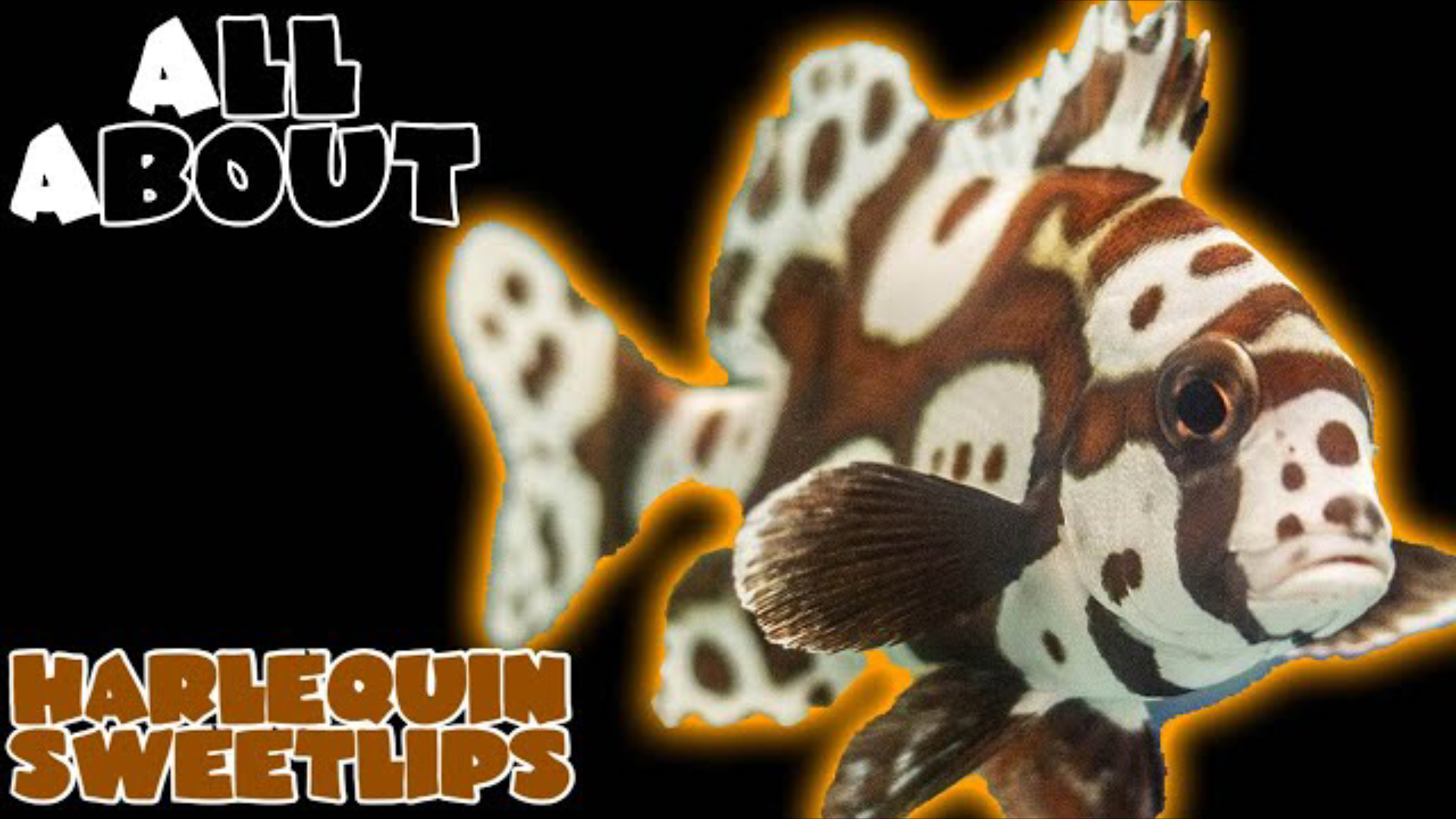Harlequin Sweetlips/ Spotted lips/ Clown Sweetlip: all you need to know
- Dec 25, 2020
- Anshika Mishra
- 2864 0 0

Harlequin Sweetlips act a bit like the Groupers but they are actually from the Grunt family.
PRICES: You will normally spend about $50 for them, as a juvenile.
TANK SIZE: In the very end you will need a 180-gallon at least, a good 6-feet long tank because these fishes do get huge. But if you got one as a juvenile and you expect to upgrade your tank, then at least get a 55-gallon for them. They need a lot of room whenever they get bigger, so eventually, you'll have to upgrade.
CARE LEVEL: This fish needs expert care, people have a big problem with the feeding, a lot of times they just don't do well. When you feed them stuff like frozen cubes or foods that are not alive they would not always eat it. Therefore a lot of people feed them shrimps, and it is like feeding the Lionfish, sometimes you got to keep feeding those live little-bitty foods to them, and eventually, they will start getting used to, you feeding them other things.
So, this is the biggest issue in keeping this great fish. Another thing that adds to the problem is they need a big tank, you have to have a large tank to home these fishes.
TEMPERAMENT: They are a very peaceful fish, the only time you will see them getting aggressive is when they are eating. They are always going to be at top of the tank and will be the first ones to eat every time. So, make sure that your other fishes are getting fed too.
REEF SAFE: They do not mess with your corals, but they are actually found in reefs in the wild. But the problem is they do see shrimp and other small fishes as prey, especially when they get bigger, therefore you definitely have to watch out for that.
TEMPERATURE: You want to keep it from 72-78
dKH: 8-12
pH: 8.1-8.0
SALINITY: 1.020-1.025
MAXIMUM SIZE: They can get a whopping 3-feet long and it is huge especially for a fish-keeping in your tank and you can expect them to at least get half that within the first couple of years of their life. So, a lot of times people already put them in a huge tank will help you a lot, because they can grow really fast.
COLORS: They start out with its brown and white pattern almost looking like a Clownfish but eventually as they do get older, you'll start to see them change and brown starts to take over a lot. Then their body turns white and they have black spots all over them, they don't even look like the same fish anymore.
DIET: They are a carnivore, as said before feeding them is the most difficult thing. Do ask the pet store owner if they have already gotten him to eat. You can feed them different types of shrimps, clamps, or pieces of squid. Sometimes you will have to feed them live feed to get them going.
TANKMATES: As they get older they will see shrimps and other fishes as small snacks for them. So, make sure to put them with fish that he will not see as food.
ORIGIN: They come to form the Indian Ocean.
Tank Cleaning
They are usually schooling fish, i.e. they like to get in groups. So multiple in tanks might do fine, the only thing is eventually they get big so if you have got 3 of them, you have three fish in your tank that is 3-feet long swimming around so they are gonna cause a tank to be really dirty unless you have a very good filtration system on it.
You will need to clean the water every once in a while because they are heavy eaters and a lot of people believe that do really good when they are fed multiple times a day. They like to eat a little bit but a lot of times during the day these guys it's almost like you have to feed them a lot of times over the day.
Rock Structure
Make sure you have a really good rock structure, they like to hang out in the back a little bit. So, make sure you have plenty of options for him to be comfortable in your tank. You also don't want to put them with really aggressive fish because he isn't much of one to protect himself.
He is not very aggressive so make sure that you do not put them with some aggressive fish who will beat them up.
When they are young they swim just like Clownfish, they have that little motion in which they swim. They actually do that in order to protect themselves from predators whenever they are young. But as they get older they tend to swim just normally like a fish.






About author